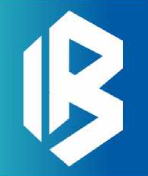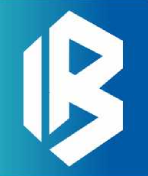
Lithium-ion Battery Market by Component (Cathode, Anode, Electrolytic Solution, and Others), End-use Industry [Electrical & Electronics (Smartphones &Tablet/PC, UPS, and Others) and Automotive (Cars, Buses, &Trucks; Scooters & Bikes;and Trains & Aircraft), and Industrial (Cranes & Forklift, Mining Equipment, and Smart Grid & Renewable Energy Storage): Global Opportunity Analysis and Industry Forecast, 2019–2027UPDATE AVAILABLE ON-D
Report Code : BII 903 Nov-2021 Semiconductor & Electronics Format : PDF Pages : 207
Lithium-ion Battery Market Overview
Lithium-ion batteries are a family of rechargeable battery types in which lithium ions move from the negative electrode to the positive electrode during discharge and charging. Chemistry, efficiency, cost and safety characteristics vary among lithium-ion battery types. Unlike lithium primary batteries (which are disposable), lithium-ion batteries use intercalated lithium compounds as the electrode material instead of metallic lithium.
Lithium-ion batteries are common in consumer electronics. They are the most popular type of rechargeable battery for portable electronics, with one of the best energy-to-weight ratios, high open-circuit voltage, low auto-discharge rate, no memory effect, and low charge when not in use. Uses Beyond consumer electronics, lithium-ion batteries are becoming popular for military, electric vehicle and aerospace applications due to their high energy density. To some extent, due to its small size (third only to hydrogen and helium), it is widely used in the automobile industry for the manufacture of electric vehicles, as well as for the manufacture of smartphones and other smart devices in the consumer electronics market. Its heavy energy efficiency makes it useful in industrial applications such as power tools.
Market Size
According to Business Intelligence Insights The "Global Lithium-ion Battery market is expected to grow from USD 41.3 Billion in 2021 to USD 93.5 Billion by 2027, at a CAGR of about +12.1% during the forecast period 2022 and 2027

Covid -19 Impact Analysis
The Covid-19 pandemic has
affected every aspect of life and business. It has emerged as a global epidemic
that has affected almost every country in the world and disrupted various
business activities around the world. The major industry which is dependent
upon the lithium-ion battery is Electronics. The industry has influenced a
variety of things, including increased counterfeiting, (ii) transportation
delays, (iii) customer behavior, and (iv) environmental perspectives.
Smartphones and tablets, desktops/laptops/notebooks, televisions, cameras and
camcorders, audio/video devices, gaming consoles and peripherals, home
appliances, and other products are used to describe the taxonomy of EI.
Wearable electronics, such as smartwatches, virtual reality, and augmented
reality gears, are examples of other product types. However, the sales and
manufacturing are beginning to grow at the end of 2021.
Market Dynamics
The growth of the lithium-ion battery market is driven by the surgeons' need for smartphones and other electronic devices, and the growth in electric vehicles is one of the key factors that has significantly boosted the growth of the global lithium-ion battery market. Also, the EV market is generating job opportunities for many citizens in the US. For instance - EVs have already been demonstrated, with electric hybrids, plug-in hybrids, and all EVs supporting 198,000 U.S. employees in 2016 and 242,700 U.S. employees by 2019. The growing market for consumer electronics and smartphones may increase the need for high-energy batteries and allow devices to run longer hours, while at the same time providing an optimal device experience. Due to continuous development in IoT, The connectivity gap is closing, and output is increasing: in the last five years, mobile broadband networks have reached about 1 billion extra individuals.
However, the high cost of lithium-ion batteries is expected to hinder the market growth. the growing adoption of alternative batteries such as lead-acid, lithium-air, sodium nickel chloride, and flow batteries are expected to hinder the market growth during the study period. Due to the residual charge in the spent battery, there is a risk of unplanned discharge, which can cause damage to property and people. Increasing electronic waste could also be hindering the market. For instance, Only 20% of electronic and electrical garbage (e-waste) is legally recycled each year, equating to the weight of all commercial airplanes ever built. If nothing is done, garbage production will more than treble by 2050, reaching 120 million tonnes per year.
Developments such as mass
production, declining cost of components, and the adoption of advanced
technology to increase battery capacity are some of the factors that contribute
to lower costs. The price reduction will lead to the adoption of this battery
in various new applications. The highest demand growth for the lithium-ion
battery market in the next few years is expected from applications in electric
vehicles, electric bikes and energy storage applications. Also, rapid
development in technology and production of electronics consuming lithium-ion
batteries shows a higher growth in the coming years. Emerging countries like
India and China would be leading the market with a high production advantage.
Segmentation Insights

The global lithium-ion battery market is segmented based on Type, Capacity, Voltage, Industry and region. Based on Type the market is segmented into Lithium Nickel Manganese Cobalt (LI-NMC), Lithium Iron Phosphate (LFP), Lithium Cobalt Oxide (LCO), Lithium Titanate Oxide (LTO), Lithium Manganese Oxide (LMO), Lithium Nickel Cobalt Aluminum Oxide (NCA). Based on Capacity the market is segmented into 0–3,000 mAh, 3,000–10,000 mAh, 10,000–60,000 mAh, 60,000 mAh and above. Based on Voltage the market is segmented into Low (Below 12V), Medium (12V – 36V), High (Above 36V). Based on Industry the market is segmented into Consumer Electronics, Automotive, Aerospace, Marine, Medical, Industrial, Power, Telecommunication.
360-Degree Camera Market Segmentation Analysis
By Type –
· Lithium Nickel Manganese Cobalt (LI-NMC)
· Lithium Iron Phosphate (LFP)
· Lithium Cobalt Oxide (LCO)
· Lithium Titanate Oxide (LTO)
· Lithium Manganese Oxide (LMO)
· Lithium Nickel Cobalt Aluminum Oxide (NCA)
By Capacity –
· 0–3,000 mAh
· 3,000–10,000 mAh
· 10,000–60,000 mAh
· 60,000 mAh and Above
By Voltage –
· Low (Below 12V)
· Medium (12V – 36V)
· High (Above 36V)
By Industry –
· Consumer Electronics
· Automotive
· Aerospace
· Marine
· Medical
· Industrial
· Power
· Telecommunication
By Region
- North America
- U.S.
- Canada
- Rest of North America
- Europe
- UK
- Germany
- France
- Italy
- Spain
- Russia
- Rest of Europe
- Asia Pacific
- China
- Japan
- India
- Australia
- Southeast Asia
- Rest of Asia Pacific
- Latin America
- Brazil
- Mexico
- Rest of Latin America
- Middle East and Africa
- Saudi Arabia
- South Africa
- UAE
- Rest of Middle East and Africa
Key Players
The key players of the market are Samsung SDI Co. Ltd.,
Ltd., and LG Chem Ltd., BYD Company, Contemporary Amperex Technology Co. Ltd.,
BAK Group, GS Yuasa Corporation (GS Yuasa), Clarios, and Toshiba Corporation, TDS Lithium-Ion Battery
Gujarat Private Limited (TDSG), Bharat Electronics Limited (BEL), Telemax India
Industries Pvt., Future Hi-Tech Batteries, Mahindra & Mahindra Limited,
Nexcharge (JV: Leclanché and Exide Industries), Exicom Tele-Systems Limited, Inverted
Energy Private Limited, Vision Mechatronics Pvt. Ltd, Trontek Group, Okaya Power Group, iPower Batteries Pvt. Ltd.
Regional Insights

World map title will be here...
At the regional level, the market is divided into North America, Europe, Asia Pacific, Latin America, and the Middle East and Africa. North America's lithium-ion battery market is currently driven by several factors. There is a growing demand in the region for electric and hybrid vehicles using lithium-ion batteries. Moreover, increasing sales of consumer electronics in the region have also increased the demand for these batteries. In addition, the need for lithium-ion batteries is stimulated by their additional power storage capacity, which is advantageous in peak hours of power demand. In addition, the rapid increase in renewable energy production in the region, especially wind and solar energy, has created the need for grid energy storage. The U.S. is the major country-level market in the North American lithium-ion battery market.
The R&D Administration of the US government has pledged to invest USD 142.2 billion in batteries R&D to achieve this critical goal. In addition, the rapid increase in renewable energy production in the region, especially wind and solar energy, also drives the need for grid energy storage. In addition, consumers are relying on electronic gadgets such as tablets, laptops and smartphones for communication and other daily tasks. Since most of these devices run on lithium-ion batteries, the demand in the region is growing rapidly.
Europe was the second-largest regional market for lithium-ion batteries. The battery is a major technology that enables the decarbonization of transportation and the value of its contents (both strategic and for Europe) has led to the development of battery recycling and recycling policies and regulations in conjunction with the European Commission (EC) Is reviewing the direction of the battery in 2020. For example, BMW invested USD 340 million in the Leipzig EV plant and USD 225 million in the Munich battery plant. Asia Pacific is projected to grow at the fastest CAGR in the coming years.
The Asia Pacific holds the largest market share of the global
lithium-ion battery market. Growing technological spending, increased awareness
among researchers to develop in-house technologies to reduce cost, and economic
development in emerging countries like India and China is expected to drive
growth in this region. A
significant portion of the Asia-Pacific population is projected to live without
access to electricity and rely on conventional fuels such as kerosene and
diesel for their lighting and mobile phone charging needs. Lithium-ion
batteries are likely to witness an increase in adoption rates due to the
technical advantages associated with integrated energy storage solutions and
lower lithium-ion batteries. As
per the India Brand Equity Foundation, the Indian appliance and consumer
electronics (ACE) market reached USD 10.93 billion in 2019. The appliances and
consumer electronics industry is expected to double to reach USD 21.18 billion
by 2025 in India.
Strategic Developments
- 22 May 2021, -Nissan is working on the development of lithium-ion batteries and has launched the first LEAF as a pioneer of mass-produced EVs. Nissan continues to develop its performance as well as high reliability. In the first LEAF (equipped with a 24-kWh battery pack), a battery module was built with a 4-cell configuration, with a total of 48 modules in the vehicle. In the second-generation LEAF (equipped with a 40-kWh battery pack), each battery module is manufactured with a standard 8-cell configuration, which increases the filling efficiency. This new battery pack configuration maintains storage capacity and reliability
- 18 October 2021, - Toyota
announces
it will invest approximately 3.4 billion (380 billion yen) in automotive
batteries in the United States by 2025. Specifically, the investment is to
develop and localize automotive battery products, which include battery
electric vehicles and are approximately part of the global total.
Table
Report Attributes |
Details |
|---|---|
| Market Size Value in 2021 | USD 41.3 Billion |
| Market Size Value in 2027 | USD 93.5 Billion |
| Growth Rate | +12.1% |
| Base Year | 2021 |
| Forecast Period | 2022-2027 |
| Historical Data | 2017-2020 |
| Forecast Units | (USD Billion) |
| Countries Covered | North America: U.S and Canada Europe: Germany, France, Italy, U.K, Spain, Russia, Rest of Europe APAC: China, Japan, South Korea, India, Australia, South East Asia, Rest of Asia Pacific Latin America: Brazil, Mexico Middle East And Africa: Saudi Arab, South Africa, UAE |
| Segments Covered | By Type, Capacity, Voltage, Industry and Region |
| Competitive landscape | Leading companies, Competitive strategies and Consumer engagement scope |
| Customization is available | If our report does not contain the information you require, you can contact our experts to have segments created for you. Please contact us at sales@businessintelligence-insights.com if you have any questions. |
